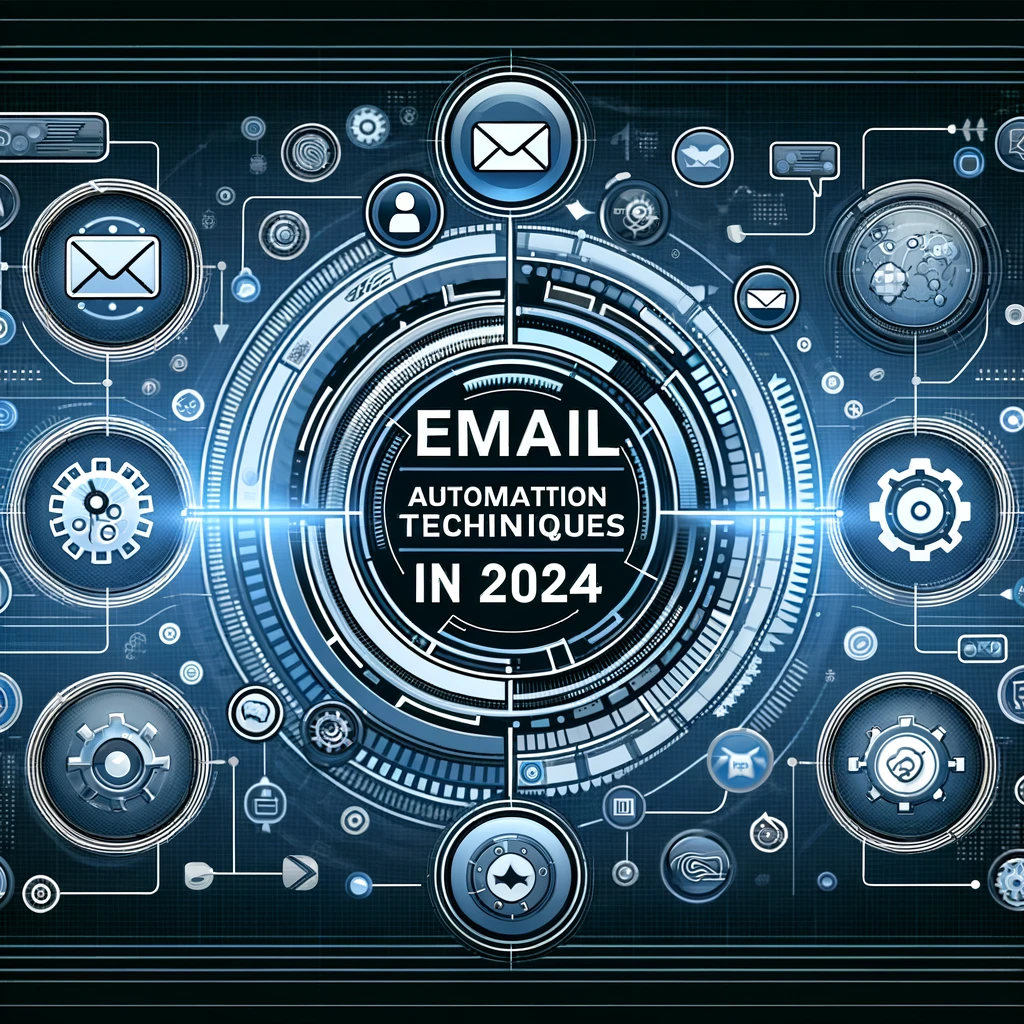Email marketing is still a big player in the game of digital marketing. Even with all the new technologies and platforms popping up, sending a direct email remains a solid way to reach people. But to really grab attention, integrating Storytelling in Email Marketing can take your campaigns from good to great.
Table of Contents
A Great way to boost conversion: Storytelling in Email Marketing!
Forget fancy marketing terms, listen up! Have you ever noticed how you remember stories better than boring facts? That’s the magic of storytelling, and it works wonders in emails too! Here’s why your emails should ditch the robot talk and become mini-stories instead:
- Make Your Readers Feel Something
Stories tap into our emotions. When your emails tell a story, they’re not just throwing information at you, they’re making a connection. It’s like chatting with a friend, and that builds trust and loyalty – the golden ticket to keeping people interested in your brand for the long haul. Plus, when people feel connected, they’re more likely to become fans and recommend you to others.
- Sticky Stories, Sticky Messages
Think about it: you remember a good story, right? By building your emails around a narrative, you make your message stickier. It’s not just about keeping your brand name out there, it’s about making your main points and those important “click here” buttons so memorable that they linger in people’s minds and influence their actions.
- Stand Out from the Crowd
Let’s be honest, our inboxes are overflowing! A plain email with a boring message is toast. But an email with a captivating story? That grabs attention. It’s a way to set your brand apart and show your personality in a sea of sales pitches and updates.
- Get People Clicking and Engaged
A good story can leave you wanting more. Story-driven emails often get opened and clicked more because they’re, well, interesting! This engagement is key to turning passive readers into active fans who interact with your content and do what you want them to do, like visiting your website or buying something.
So, ditch the robot talk and weave a story into your next email. You’ll be amazed at the difference!
5. Supporting the Buyer’s Journey
A good story can guide your readers through the buyer’s journey—from awareness to decision-making. Tailor your stories to where your reader is in that journey, addressing their needs and emotions along the way. This strategy helps nudge them closer to making a purchase or taking another key action.
Implementing Storytelling in Email Marketing
Want to get started with storytelling in email marketing? Here are some practical tips:
1. Use Customer Testimonials and Success Stories
Incorporating real-life stories from customers can make your emails more relatable and trustworthy. These stories validate your claims and show potential customers the real-world value of what you’re offering.
2. Tailor Stories to Segmented Audiences
Personalization is key. Customize your stories to match the interests and needs of different segments of your audience. This makes your emails feel more personal and relevant, which can dramatically increase engagement.
Storytelling in Email Marketing: Enhance Your Emails with Stories
Get The Super affiliate survival guide
3. Employ Visual Storytelling in Email Marketing
Don’t just tell; show. Use images, videos, and graphics to enhance your Storytelling in Email Marketing. Visuals can help illustrate your points and make your emails more engaging and memorable.
4. Continuously Optimize and Test
Always be testing. Try out different storytelling techniques, track how they perform, and tweak your approach based on what you learn. What works for one audience segment might not work for another, so keep refining your strategy.
The Importance of Storytelling in Email Marketing
Email marketing is a super useful tool for businesses to connect directly with their customers. But just sending out emails isn’t enough; the content has to catch the reader’s attention and keep them interested. That’s where storytelling comes into play. Let’s break down why storytelling is so crucial in making your emails not just seen but also felt and remembered.
Engagement and Conversion Rates
First up, let’s talk about engagement. Storytelling in email marketing isn’t just about writing; it’s about creating a mini adventure for the reader. When a company uses stories in their emails, they’re not just sharing information—they’re taking the reader on a journey. This makes the email much more interesting to read, and more likely to be opened and clicked on.
For example, if you get two emails, one with just a list of products and another telling the story of someone using and loving the product, which one would you pay more attention to? The story, right? That’s because stories pull us in and make us curious about what happens next. This increase in interest boosts the email’s open rates (how many people open the email) and click-through rates (how many people click on links within the email).
Building Credibility and Trust
Another big win from using stories in your emails is building trust and credibility with your audience. When a brand shares personal stories or customer experiences, it makes the brand feel more human, not just a faceless company. These personal touches allow people to connect emotionally with the brand. Emotional connections are powerful and can make people trust a brand more because they see it as relatable and transparent.
This trust is crucial, especially when you want people to buy your products or believe in your message. When people trust a brand, they’re also more likely to recommend it to others, expanding the brand’s reach naturally.
Memorability of Content
Ever wonder why you can remember stories from movies or books better than the stuff you studied in school? That’s because our brains are wired to remember stories better than plain facts. When you use stories in your emails, people are more likely to remember your message. This isn’t just a nice-to-have; it’s a powerful tool for keeping your brand in the minds of your customers.
Long-term, memorable content helps with brand recall. This means when a customer thinks about a product or a service like yours, your brand pops into their mind first. This long-term memory of your stories could lead to more sales and a stronger brand presence.
how you can use storytelling to make your email campaigns more engaging. Whether you’re promoting your family business or launching a startup, the right stories can truly captivate your audience. Let’s break down the best ways to gather stories that will light up your emails.
Personal Experiences
First of all, personal stories are the key. They need to be authentic and come from the heart because people can spot a fake a mile away, and nobody likes that. When you share something real that happened to you or your business, it helps your readers feel connected to you.
Think about moments that stirred your emotions or made a big impact on you. Maybe you faced a big challenge, had a laugh over a silly mistake, or celebrated a huge win. If it mattered to you, chances are it will strike a chord with your audience too.
Customer Stories
Next, let’s talk about the goldmine that is a customer stories. These are incredibly valuable because they show that real people benefit and enjoy your products or services. Using testimonials or stories of customer successes not only boosts your image but also makes others want to jump on board.
However, it’s crucial to get permission before sharing someone else’s story in your emails. It’s the right thing to do legally and ethically, and it keeps your business respectful and trustworthy.
Historical and Cultural References
Using stories that everyone knows can also be a fantastic way to connect. Whether it’s a famous historical event or a well-known cultural tale, these stories can add depth to your content and make it more interesting.
Just make sure these stories are relevant to your message and add value. They should teach something or provide insight, making your emails not just enjoyable but also informative.
Current Events and News
Finally, tying your emails to current events can make them incredibly relevant and engaging. This approach keeps your content fresh and aligned with what’s on people’s minds.
For instance, if there’s a major sporting event or a significant news development, think about how it relates to what you’re offering. The key is to make sure the link between the current event and your message feels natural and adds to the conversation.
In summary, pulling stories from your personal experiences, customer interactions, historical events, and current happenings can transform your email campaigns from ordinary to exceptional. By focusing on authenticity, relevance, and respect, you can create emails that not only draw attention but also build meaningful connections with your audience.
making your email campaigns really stick with your audience by weaving in some great stories. Here’s how you can get started with stories that not only catch the eye but also seamlessly blend into your marketing messages.
Structuring the Email
kicking off your email with an engaging story is like opening with a bang. Choose a story that relates directly to your readers—maybe something relatable, a little surprising, or emotionally charged. This story should be something that immediately grabs their attention and makes them want to keep reading.
Once you have that initial hook, the next step is to make sure the story flows smoothly into your main marketing message. For instance, if you’re telling a story about a customer who had a great experience, link it back to the product or service that made it possible. This way, the story naturally leads into what you’re promoting, keeping your readers engaged and making the marketing message feel more relatable.
Connecting Story to Message
It’s crucial that your story ties back to the main point of your email. After drawing in your audience with the initial story, use smooth transitions to bring them to your main content or offer. Say something like, “And just like Sarah, you can enjoy these benefits too with our product.” This helps the story build up to your main message and shows the readers why it matters to them.
Call to Action
After telling a compelling story, you want to lead your readers to take action—this is where your call to action comes in. The transition from the story to the call to action should feel natural and motivate the reader to act. Make sure your call to action is straightforward and stands out, like, “Ready to get started? Click here and see the difference for yourself!”
Conclusion
In summary, using storytelling in email marketing can make your campaigns more than just informative—they become engaging and memorable. Stories help build a connection with your audience, making them more likely to interact with your content and respond to your calls to action.
So, why not give storytelling a try in your next email campaign make sure tu use storytelling in email marketing and you will see your business boosting?!! It’s a simple, effective way to enhance engagement and get better results. Trust me, a good story can make all the difference!



